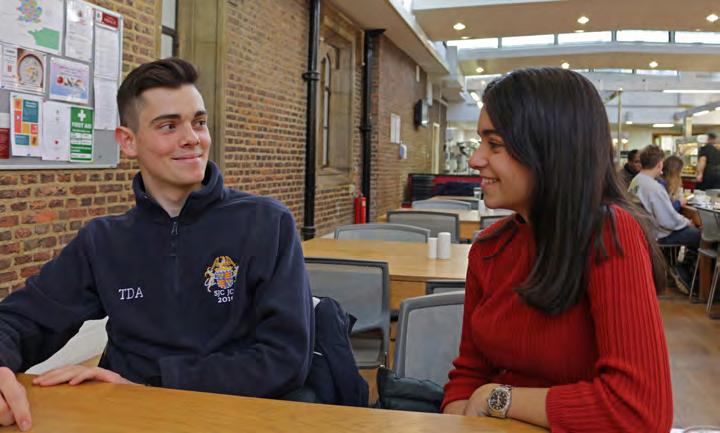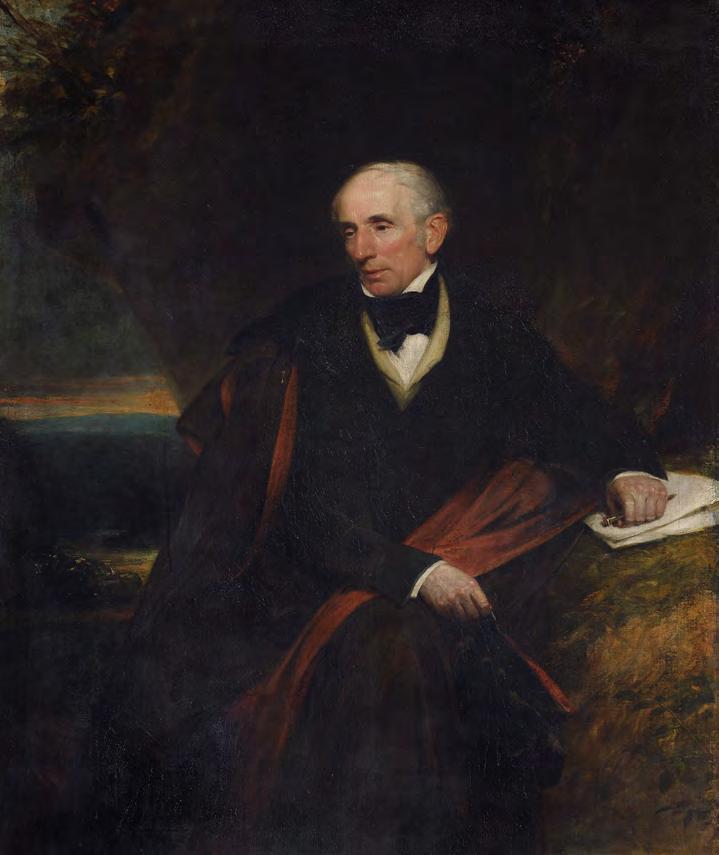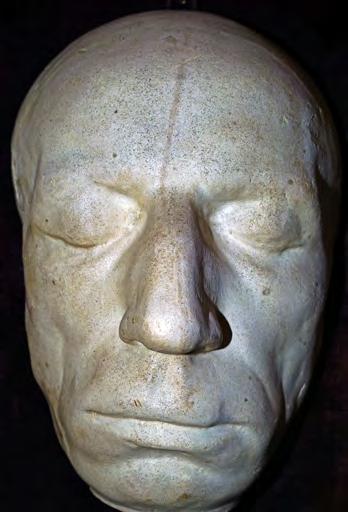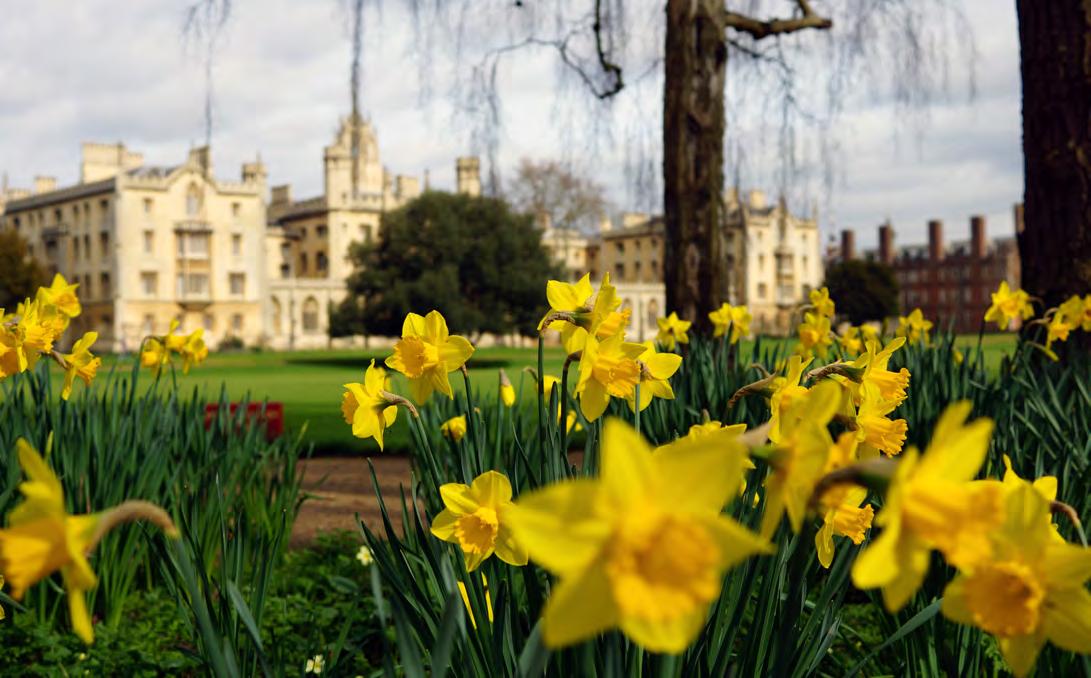
10 minute read
9 Meet the JCR Co-Presidents
Meet the new JCR Co-Presidents
Restructuring the room ballot system, keeping prices low, and deciding on a name for the summer event: these are just some of the aims for the new JCR Co-Presidents, as Louise Hanzlik learns.
Choosing the name of this year’s JCRhosted summer event could cause a rift between the new Co-Presidents. “I think it should just be called the June Event”; “It should be the June Garden Party”; “It’s not really a garden party though, is it?”; “Well, it is taking place in a garden...”
started their new roles in January as Co-Presidents of the Junior Combination Room (JCR), the studentelected committee that represents undergraduates at St John’s. The JCR Committee was officially established at St John’s in the late 1930s, and today its members attend meetings with senior academics and College leaders, as well as organising events and welfare initiatives.
8 Despite not agreeing on the event name, it is plain to see that Tim and Candela get on remarkably well. The second-year undergraduates are both international students – Tim lived in America until he was eight and then moved to France, and Candela is from Spain. They have been good friends since starting their studies at St John’s after they met at a student night and realised they had a few things
Tim is reading History and Politics, and Candela is studying Engineering. “I love maths and physics, so I thought, why not engineering! It is a really broad subject, so there will be lots of opportunities in the future.”
Tim, who boxes with the University Boxing Team and also plays football, asked Candela to run with him as Co-President in the elections back in September. “He was actually trying to persuade me as long ago as June!” says Candela. Previously the JCR Facilities Officer, Tim considered running for President alone – at school he was the class rep and head of various societies – but he decided it would work well if he and Candela ran as a duo. “She is well organised and focused, and I liked the idea of being Co-President with another international student.” have to be involved; we discuss whether events are feasible, oversee them, help out, and put plans into action.”
Although Tim and Candela joke around with one another, they are focused. One of their aims is to reform the room ballot system. “Currently, it is a scholars’ ballot, where those who do best academically in College are given priority in choosing their accommodation,” says Tim. “We don’t necessarily want to change that, but we do want to work towards improving the appeal of the rooms outside of College which are often left to those at the bottom of the ballot. We would like to see all freshers living in Cripps in the future.”
The Co-Presidents would also like there to be more integration between undergraduates and graduates. “We plan to host several joint events this year where we can work closely with each other and bring everyone together,” says Candela.
“If anything goes wrong, the buck stops with us!” the actual open day,” says Tim. “I actually chose St John’s based on its proximity to the History faculty and the football fields – and because it looked nice in photos!”
As well as dealing with the day-to-day challenges of being Co-Presidents of the JCR, leading a large (20-people-plus) committee is a challenge in itself. “We want the team to thrive and flourish, and we want to have a good working relationship with everyone, but we also have to ensure we keep control – if anything goes wrong, the buck stops with us,” says Tim. “We have a huge responsibility, but we are ready for it.”
“We received a lot of advice from Anusha and Ollie,” Candela tells me. “They told us that being Co-Presidents can be tough, but there are two of us to help each other out, and to deal with unexpected issues which crop up. But the life experience it gives you is really rewarding.
Candela is from A Coruña, a port city in northwest Spain, and likes cheerleading and water-skiing – although she ruefully acknowledges the latter is not really ‘a thing’ in Cambridge. She took some persuading to stand, but she is glad that she did. “I did my A-Levels in the UK, but I hadn’t done much public speaking in English before, so that was the biggest challenge for me.” Like Tim, she was a student rep at her high school. She decided to run alongside him as “we complement each other well. He is more laid back than me – but he’s not disorganised!” Keeping costs low in College is also high on their agenda. The pair would like to ensure prices in the Buttery and accommodation costs stay as low as possible, and they would like to reduce the price of ‘super halls’, the themed formal dinners which take place every term. Tim and Candela are also interested in introducing a Virtual Open Day, to allow those who cannot visit St John’s in person to experience the College – which they believe would be particularly beneficial for international students. “The first time we both saw St John’s was at our interview; we couldn’t attend
The pair won the election with a margin of 19 votes – 177 votes were cast for them. This is the third year that the JCR has had Co- Presidents – Fionn Dillon Kelly and Ben Jones were the first ever Co-Presidents in 2018, followed last year by Anusha Ashok and Oliver Barnard.
Tim and Candela’s first task was to put together the new JCR committee, and meet with senior academics and College officers. They then planned their first JCR ‘ent’ (student social event), Pirates in the Fisher Foyer, followed by their first welfare event featuring universally popular chocolate fountains. “The welfare team organised it, but as Co-Presidents we
9 “It’s great to know that we have the power to make change happen – and to really make a difference.”
The Co-Presidents are looking forward to organising their big summer event, which takes place in June, during May Week. “We are in the process of setting up the sub-committee for the event. It’s less formal than the May Ball, and it’s a really nice, popular, relaxing evening. There is a lot of work to do, but it will be a fun night.
“We just need to agree on the name!”

Happy birthday Wordsworth! Celebrating one of the world’s greatest poets
2020 marks the 250th anniversary of Romantic poet William Wordsworth’s birth. Rebecca Watts, curator of a new Wordsworth exhibition in the Library, reflects on the life of this renowned Johnian.
When the seventeen-year-old William Wordsworth arrived in Cambridge in October 1787, he wasn’t exactly bowled over by what he saw. ‘It was a dreary morning when the chaise / Roll’d over the flat plains of Huntingdon’, he later recalled in his book-length autobiographical poem The Prelude. A native of Cumbria, he had spent his childhood and school years roaming free amid the dramatic fells and picturesque lakes of northwest England. By contrast, the ‘three gloomy courts’ that comprised St John’s at that time (New Court was yet to be built) held little inspiration for him. He complained of the ‘humming sound, less tuneable than bees’ coming from the College kitchens directly below his room on F staircase, First Court, and of the noise from ‘Trinity’s loquacious clock’ and ‘pealing organ’, both adjacent to his window.
It’s perhaps not surprising that he shirked his ‘College labours’ and ‘the Lecturer’s room’, choosing instead to ‘pace alone the level fields’ beyond the city’s confines. Passionate about literature from an early age, as an undergraduate he read widely, and also studied Italian. Unfortunately, his knowledge of literature was of little use when it came to sitting his exams, because the Cambridge curriculum in the late eighteenth century was predominantly mathematical. Having been awarded a scholarship on the basis of academic merit in his first term, he saw his marks steadily dwindle, and in January 1791 he graduated without honours.
Portrait of Wordsworth by Henry William Pickersgill (1833). The original oil painting hangs in the Hall.

Wordsworth went on to become one of the world’s best-loved poets? His older brother Christopher had excelled at Cambridge, and via a distinguished career in the Church became Master of Trinity College. William, by contrast, was a rebel spirit. In the decade after leaving St John’s he moved between London, Revolutionary France, southwest England and Germany, deriving inspiration from the places he visited and the people he met, and developing his own radical
By the time he returned to his native Lake District in December 1799, he had published three volumes of poetry, and had inherited a modest legacy from a friend which enabled him to live independently and pursue his literary ambitions. Over the course of the following decade he wrote some of the most memorable and enduringly popular poems in the English language, including the daffodils poem (‘I wandered lonely as a cloud’) – which was inspired by reading his sister Dorothy’s description of daffodils in her journal, two years after they had both encountered them when out walking on the shore of Ullswater.
While it’s easy to imagine Wordsworth – later Poet Laureate to Queen Victoria – as the archetypal Romantic poet, literary success did not come to him straight away. His landmark volume of poetry, Lyrical Ballads (a collaboration with Samuel Taylor Coleridge) left the critics baffled when it was first published in 1798, and Wordsworth was forced to add a lengthy preface to the second edition, explaining the key ideas behind his radical poetic ‘experiments’. Throughout his career, his work was championed by some and ridiculed by others. Reviewing The Excursion (1814), a book-length poem Wordsworth composed as a companion-piece to The Prelude, one critic commented: ‘This will never do. […] The case of Mr Wordsworth, we perceive, is now manifestly hopeless; and we give him up as altogether incurable, beyond the power of criticism.’
An original printed copy of this wonderfully savage review is just one of the items from the College’s Wordsworth Collection currently on display in the Library Exhibition Area, as part of an exhibition to celebrate Wordsworth’s 250th birthday. The exhibition tells the story of Wordsworth’s time at St John’s, as well as charting his friendships with some of the greatest poets and artists of his time, and reflecting on his literary career and his enduring reputation.
Alongside manuscripts, original correspondence and first editions of Wordsworth’s published works, the exhibition showcases some unique artefacts – including his breakfast tea cup, and a ‘life mask’ (a cast of his face) made by the artist Benjamin Robert Haydon when Wordsworth was 45. If you think he looks rather serious, imagine him in a dressing gown, with his face smothered in wet plaster and straws stuck up his nose, sitting perfectly still while his friends peeked round the door to laugh at him. According to Haydon’s diary, when the cast was removed
Wordsworth’s life mask (1815)

Wordsworth ‘came into breakfast with his usual cheerfulness and delighted & awed us by his illustrations & bursts of inspiration.’
Wordsworth at 250 is open to all, Monday to Friday, 9am to 5pm in the Library Exhibition Area, until 24 April 2020.
An online version of the exhibition is also available to view on the College website at www.joh.cam. ac.uk/online-exhibitions.
I wandered lonely as a cloud That floats on high o’er vales and hills, When all at once I saw a crowd, A host of golden daffodils; Beside the lake, beneath the trees, Fluttering and dancing in the breeze.
Continuous as the stars that shine And twinkle on the milky way, They stretched in never-ending line Along the margin of a bay: Ten thousand saw I at a glance, Tossing their heads in sprightly dance.
The waves beside them danced, but they Out-did the sparkling waves in glee: –A poet could not but be gay, In such a jocund company: I gazed – and gazed – but little thought What wealth the show to me had brought:
For oft when on my couch I lie In vacant or in pensive mood, They flash upon that inward eye Which is the bliss of solitude, And then my heart with pleasure fills, And dances with the daffodils.




